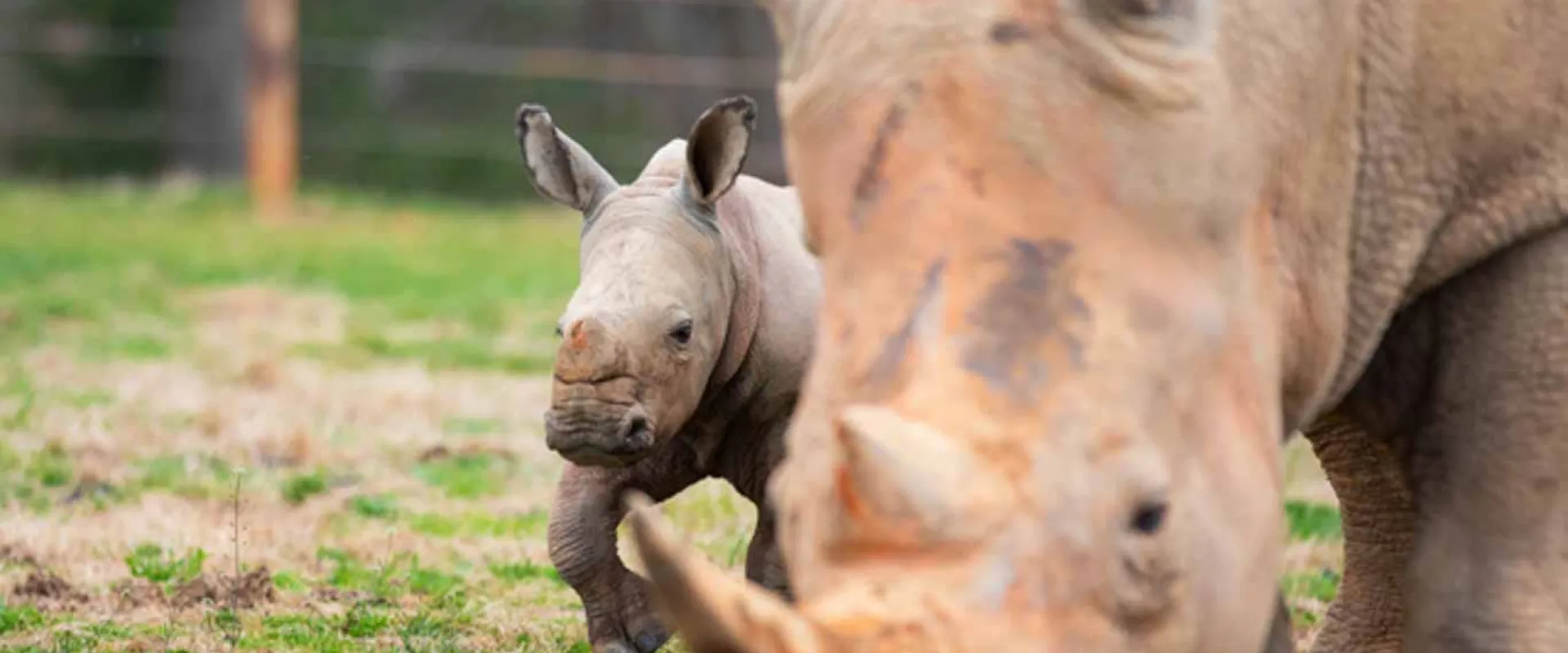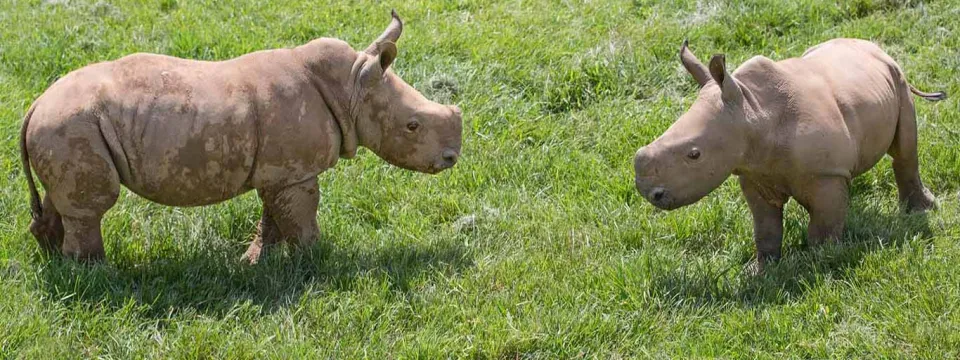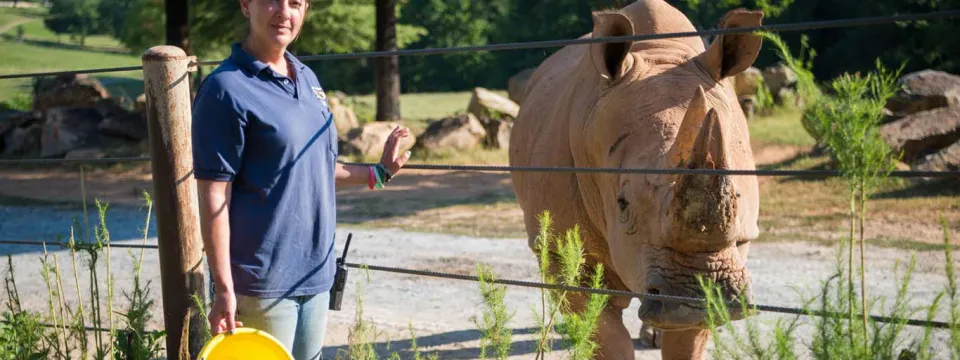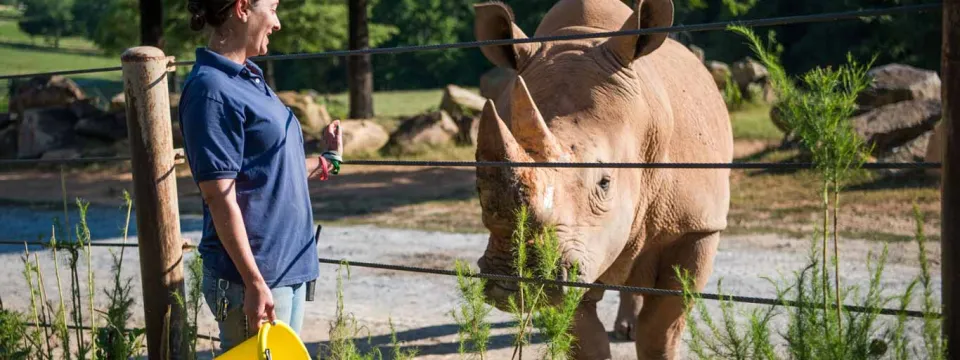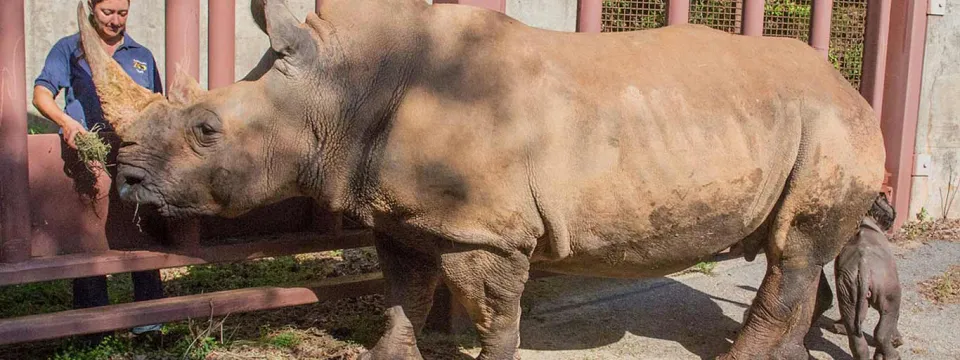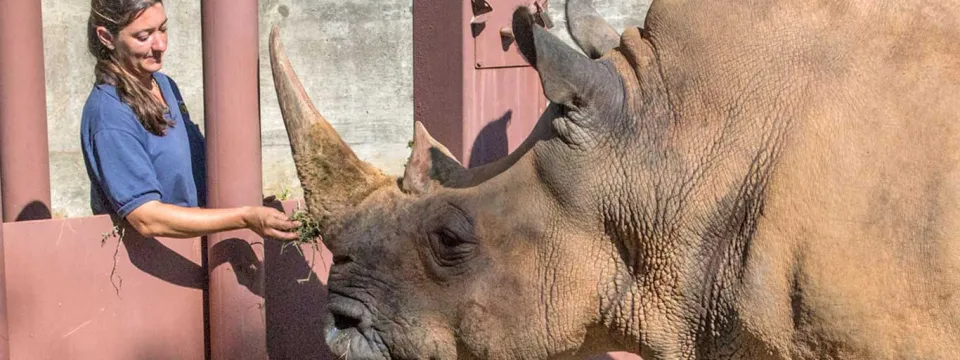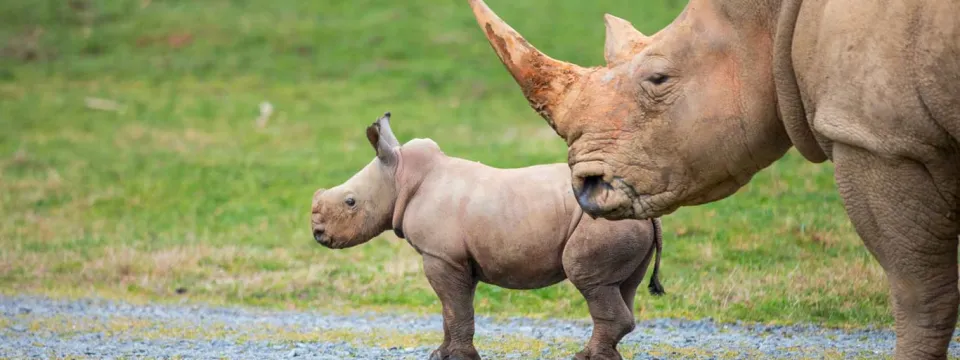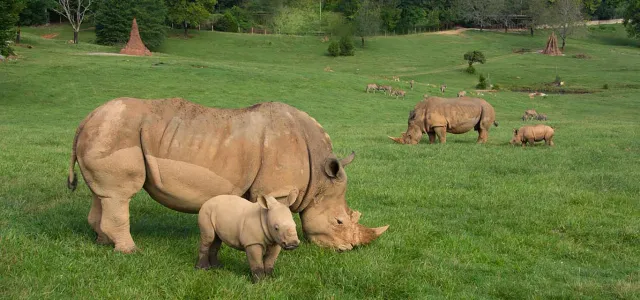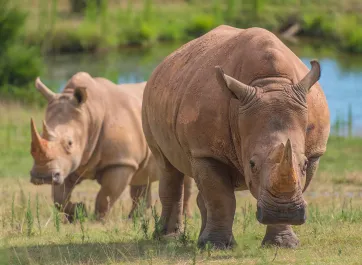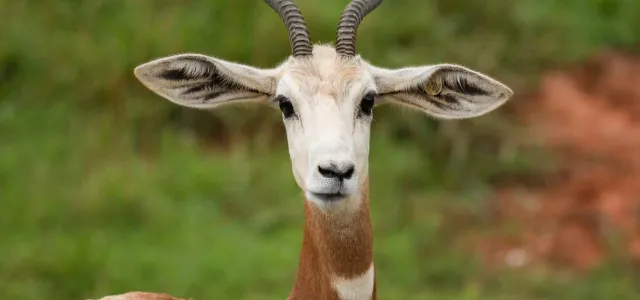September 22 is International Rhino Day. Read how the zoo keeps our crash (a group of rhinos) moving along at a healthy pace.
Rhino Crash Management
Jade Tuttle, Animal Management Supervisor, Watani Grasslands
You may have seen in the news that our herd, or crash, of rhinos, is growing! Four new calves, all female, have been born at the Zoo in the last two years.
Those baby girls are cute, and they keep us on our toes, but do you know what it takes for those rhinos to join our management program?
Just like with us, a healthy rhino starts with diet and exercise. Southern white rhinos are the only grazing species of rhino, meaning that they eat grasses. Our crash lives on 40 acres of pasture –the Watani Grasslands habitat - and that is enough grass to make them plump. To keep the rhinos at a healthy size, we limit processed foods, and their main diet is grass or hay, depending on the season.
Each rhino receives one scoop of rhino pellets in the morning near the entrance to the habitat, which allows the keepers to get a thorough look at each individual or shift the crash into the barn to accommodate habitat maintenance, scheduled training sessions, or any potentially bad weather.
Southern white rhinos are the second-largest land mammal (after elephants) and our heaviest rhino weighs around 5500 lbs! Obviously, you can’t make a rhino do anything they don’t want to, so a large part of managing the crash involves positive reinforcement training.
Above: Supervisor Jade Tuttle on the Grasslands with the crash
That means the rhinos are asked to participate with certain behaviors for health checks and exams, which help the veterinarian team monitor their overall well-being. The rhinos are rewarded with something they really like each time they do (positive reinforcement). Many times, it’s just a practice session to build trust between the keeper and rhino so that when a real vet exam or procedure takes place, the rhinos willingly participate.
Our strong relationships and practice are how we can care for our rhinos during all phases of their life. All the rhinos are involved in the training program, from the youngest to the oldest, and keepers start building a relationship within the first couple of weeks of birth.
We work with the animals in a protected area made of vertical bollards and are just a little wider than the rhino so that keepers can safely touch every part of them from the side. The rhinos are always free to leave this area if they want to, but usually, they value the rewards so much that they willingly stay.
Above: Tuttle has protected contact while training the rhinos with positive reinforcement
Tracking a rhino’s weight is an easy way to pick up on health concerns early. We want to see the young rhinos growing and look for any sudden change in adults, which could indicate a change in health. The scale sits in our protected contact training area and is one of the first things each rhino learns. Mguu and Jojo, our new female calves of 2020, are already very comfortable with being weighed --- the problem is getting the energetic kiddos to stay still long enough to read the numbers!
The next behaviors we ask of the rhinos are to collect blood and allow injections for vaccinations. Just like your own pets, making sure the rhinos are vaccinated against illness is the best preventative medicine we can provide.
We start training early with the calves, and each rhino receives booster injections annually. Blood samples are also brought to the veterinary lab regularly to check for any changes that may be an early sign of health concerns.
From eye drops to x-rays, ultrasounds, and foot soaks, the keepers give it their all, and the rhinos respond the same. In the end, it is building a relationship of trust, and that starts the first daythe rhino is here at the North Carolina Zoo.
Image below: four rhino calves in the past two years have kept the rhino moms, and keepers, very busy!
